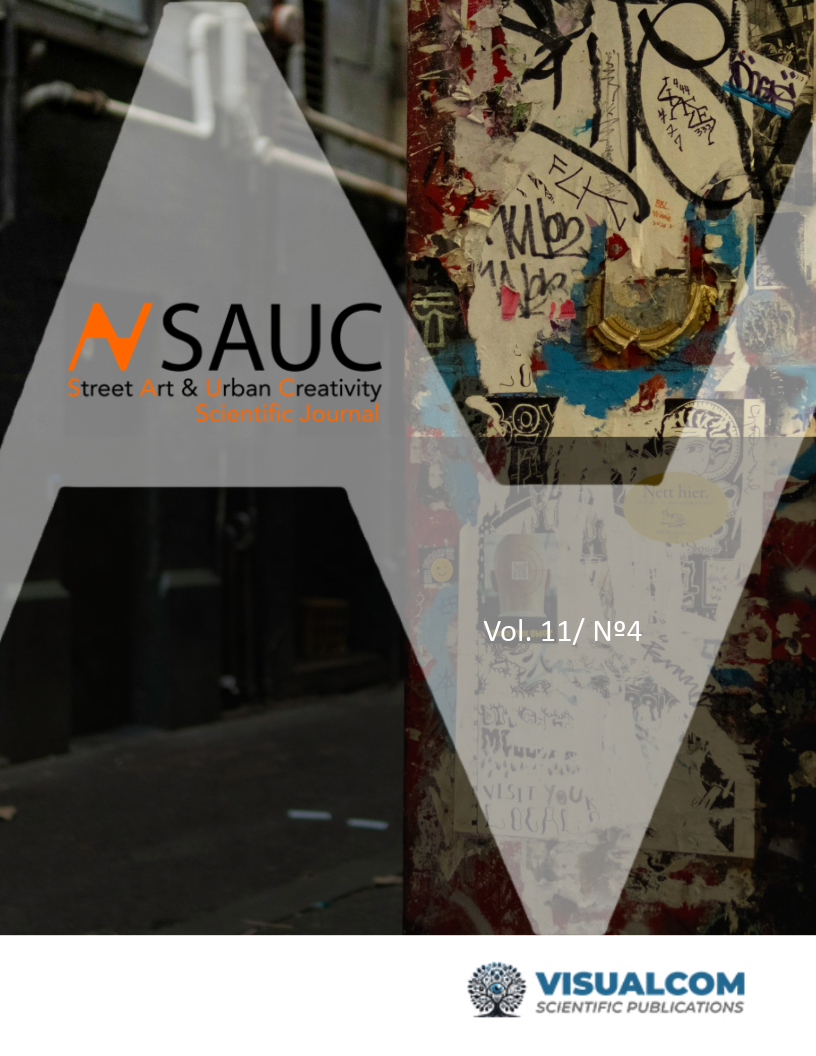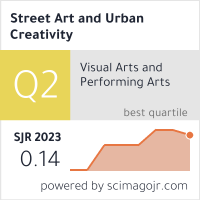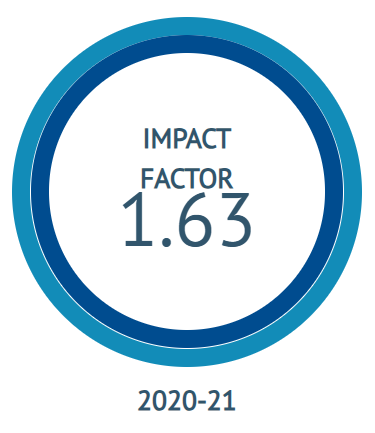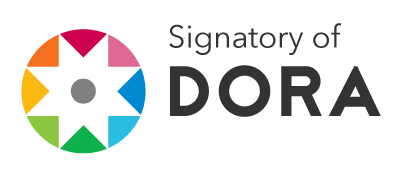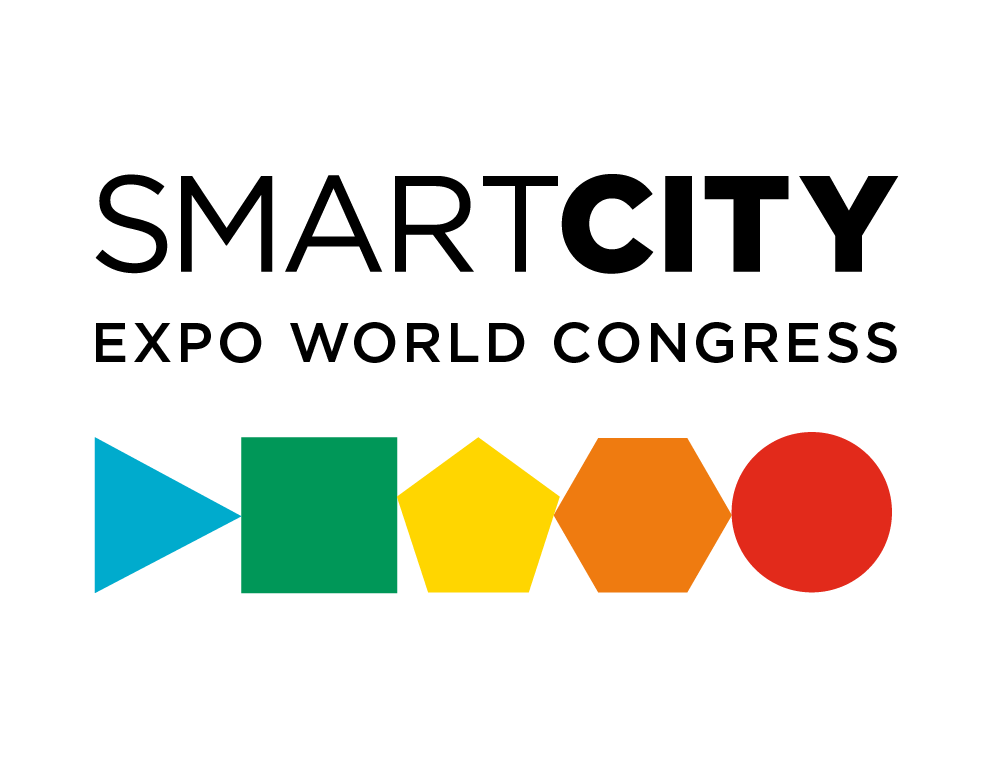Carabanchel, a Space for Visual Arts on the Outskirts of Madrid
DOI:
https://doi.org/10.62161/sauc.v11.5794Keywords:
Contemporary Art, Cultural peripehries, Artistic Territories, Carabanchel, Art Market, Creative Districts, MadridAbstract
The DISTRITO 11 brand as a cultural space has consolidated Carabanchel as a new artistic reference point in the periphery of Madrid. The spontaneous concentration of artists' studios, galleries, recording studios, architectur, etc., until reaching 170 artistic containers, has materialised a new creative territory, the object of this study.
The research begins with a bibliographic search to find out about the district's own identity and the causes of the displacement of agents from the art world. An exploratory method has been used that includes fieldwork with direct immersion as well as contact and monitoring of actions carried out by the creators of this change.
It is concluded that the motivation for the establishment in Carabanchel is initially due to the architectural idiosyncrasy and the high price of housing, which for its continuity depends on the collaboration of private and public agents.
Downloads
Global Statistics ℹ️
|
242
Views
|
208
Downloads
|
|
450
Total
|
|
References
Asensio, A. (2018). El mercado del arte en España y el rol del Estado como Dinamizador del Mercado. [Monografía] Universidad Pontificia de Comillas. https://bit.ly/47CfQZ8
Aumente, P. (2016). La metamorfosis del concepto de barrio artístico en dinámicas de distrito cultural. En Chaves, M. A. y Lorente, J. P. (Eds.). En Barrios Artísticos y Distritos Culturales: nuevos espacios para la creatividad y la revitalización urbana (pp. 163-228). Icono 14 Editorial.
Aumente, P. (2021). Arte colaborativo y distritos culturales. Revisitando algunas fuentes. En Arte y Políticas de Identidad, 25(25), 13-32. https://doi.org/10.6018/reapi.506171
Ayuntamiento de Madrid. Área de Gobierno de Economía, Innovación y Hacienda. S.G. Estadística, Padrón y Procesos Electorales. Censo de Locales y Actividades. (2023). https://bit.ly/3ZDMcRr
Ayuntamiento de Madrid. Explotación estadística del Padrón Municipal de Habitantes. (2022). https://bit.ly/3ZDMcRr
Decreto del Ministerio de la Gobernación (31 de enero de 1948). Se aprueba la anexión total de los términos municipales de Carabanchel Bajo y Carabanchel Alto al de Madrid. Boletín Oficial del Estado, 31. P. 447. https://bit.ly/3GeqsnE
Garagui, E. (31 de agosto de 2024). Carabanchel sí es el Soho londinense: el precio de la vivienda ya roza máximos históricos. El Economista. https://bit.ly/44bCB4J
Guijarro, J. L. (2024). España supone el 1% del mercado del arte global: ni tan mal. The Conversation. https://bit.ly/4eyimli
Lorente, J. P. (2008). ¿Qué es un barrio artístico? ¿Qué papel pueden desempeñar los museos en su desarrollo?: avance de algunos puntos a tratar en un seminario co-organizado por el Observatorio Aragonés de Arte Público de la Universidad de Zaragoza. AACA Digital: Revista de la Asociación Aragonesa de Críticos de Arte, (2), 4. https://bit.ly/44eXWKD
Marco, M. (5 de julio de 2024). Carabanchel es una feria: el barrio que se ha transformado con el arte. El Cultural. El Español. 6-10. https://bit.ly/47E4fbV
Martín, L. y Ibabe, J. (10 de julio de 2024). Silvo, de Galería Nueva: «Carabanchel es propicio para montar una galería porque hay recorrido, hay coleccionistas». Idealista/News. https://bit.ly/4djnmcB
Redacción Cibeles. Ayuntamiento de Madrid. (13 de mayo de 2024a). La revolución creativa de Carabanchel ya tiene nombre propio: DISTRITO 11. Diario de Madrid. https://bit.ly/4cSRM5Q
Redacción Cibeles. Ayuntamiento de Madrid. (5 de abril de 2024b). Nace Distrito 11, el paraguas cultural para la promoción artística en Carabanchel. Diario de Madrid. https://bit.ly/4cQ73nP
Sacco, P. L. y Ferilli, G. (2018). Cultura y desarrollo local: el distrito cultural sistémico. Ciudades Creativas de Fundación Kreanta, (3), 9-20.
Sanchez, N. (15 de abril de 2023). Villanueva del Rosario, así se convierte un remoto pueblo de Málaga en un hervidero cultural. El País. https://bit.ly/3XNLcsu
Sánchez, J. M. y Nicolás, J. (2024). Carabanchel es cultura. Artelibro Editorial.
Secretaría General Técnica, Ministerio de Administraciones Públicas (2008). Variaciones de los Municipios de España desde 1842 (1.ª edición). Madrid: Gobierno de España. https://bit.ly/3zt0jOE
Silvestre, J. F. (2005). Las migraciones interiores durante la modernización económica de España, 1860-1930. Cuadernos económicos de ICE, (70), 157-180.
Treviño, C. (2024). Artistas visuales y nuevos espacios culturales en la periferia de Madrid. Comunicación digital y promoción. European Public & Social Innovation Review, 9, 1–18. https://doi.org/10.31637/epsir-2024-651
Treviño, C. (2023). Simbología para delimitar espacios LGBT en la ciudad: Castro y Chueca. En J. Sierra y C. Rangel (Coords.). Metrópolis reflexiva: diálogos interdisciplinarios sobre la ciudad contemporánea (pp. 297-310). McGraw Hill España.
Portal Idealista.com (Agosto de 2024). Evolución del precio de la vivienda en venta en España. https://bit.ly/3MT06Yf
Downloads
Published
How to Cite
Issue
Section
License
Copyright (c) 2025 Authors retain copyright and transfer to the journal the right of first publication and publishing rights

This work is licensed under a Creative Commons Attribution-NoDerivatives 4.0 International License.
Those authors who publish in this journal accept the following terms:
-
Authors retain copyright.
-
Authors transfer to the journal the right of first publication. The journal also owns the publishing rights.
-
All published contents are governed by an Attribution-NoDerivatives 4.0 International License.
Access the informative version and legal text of the license. By virtue of this, third parties are allowed to use what is published as long as they mention the authorship of the work and the first publication in this journal. If you transform the material, you may not distribute the modified work. -
Authors may make other independent and additional contractual arrangements for non-exclusive distribution of the version of the article published in this journal (e.g., inclusion in an institutional repository or publication in a book) as long as they clearly indicate that the work was first published in this journal.
- Authors are allowed and recommended to publish their work on the Internet (for example on institutional and personal websites), following the publication of, and referencing the journal, as this could lead to constructive exchanges and a more extensive and quick circulation of published works (see The Effect of Open Access).

